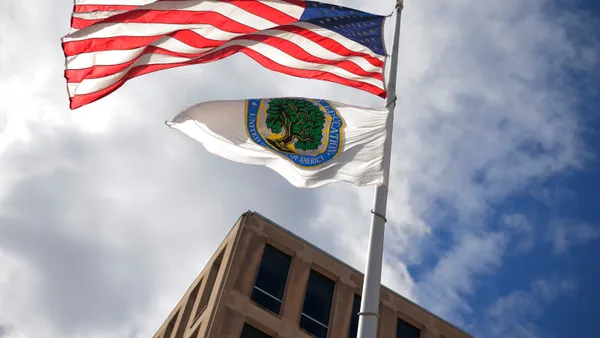Dive Brief:
- With participation in the Community Eligibility Provision jumping nearly 19% last school year, half of all National School Lunch Program schools now use the provision that lets low-income schools serve free meals to all students, according to a recent Food Research & Action Center report.
- Some 47,766 schools across 7,717 districts opted into the federal program last year, giving over 23 million students in high-poverty schools access to free breakfasts and lunches.
- The rise in CEP participation follows the U.S. Department of Agriculture’s expansion of the program in October 2023 that added 3,000 eligible school districts. FRAC, however, also partially credits state legislative support of the program for this increase.
Dive Insight:
The 2023-24 school year marked a second straight year of notable growth in school participation in CEP. The year before, FRAC found the number of schools and districts adopting the provision jumped 21%.
In 2023, the USDA lowered the minimum threshold for low-income schools and districts to qualify for the federal reimbursement program. Previously, 40% of students enrolled in a school had to be certified as eligible for free school meals, but that threshold is now 25%.
Even so, FRAC said the threshold is not low enough to get even more schools to opt into the program. That’s because additional funding is needed for schools to serve meals to all students, the anti-hunger nonprofit said. FRAC also said the federal reimbursement multiplier should be raised from 1.6 to 2.5 to help schools afford the provision.
“While we are grateful for the recent lowering of the threshold for CEP participation, without additional funding, many schools and districts across the country still struggle to adopt this transformative program,” said Crystal FitzSimons, FRAC’s interim president and one of the report’s authors, in a December statement. “Increasing the federal reimbursement multiplier is essential to ensure that every eligible school can provide free, nutritious meals to all students.”
FRAC also pointed to states like New York that implemented policies to cover federal reimbursement gaps, leading to a surge in school meal participation.
Additionally, FRAC recommends that every state implement Medicaid direct certification to help schools improve eligible students’ access to free meals and adopt CEP.
While more high-poverty schools are serving free meals to all students, the future of the Community Eligibility Provision is hazy with President-elect Donald Trump's return to the White House on Jan. 20.
During his first administration, Trump signed the Families First Coronavirus Response Act, allowing USDA to issue waivers for certain requirements and enabling schools nationwide to temporarily serve free school meals to all students. That pandemic-era measure, however, expired after the 2021-22 school year.
Trump has not signaled his position on the Community Eligibility Provision going forward. However, Project 2025, a Heritage Foundation policy blueprint developed by former Trump administration officials, called for the program’s elimination. The policy agenda also proposed that the USDA work with lawmakers to reject any efforts to support universal school meal programs.
The federal school lunch and breakfast programs "should be directed to serve children in need, not become an entitlement for students from middle- and upper-income homes,” Project 2025 said.
In the face of congressional inaction on universal school meals, eight states had implemented their own such policies as of November, according to FRAC.















